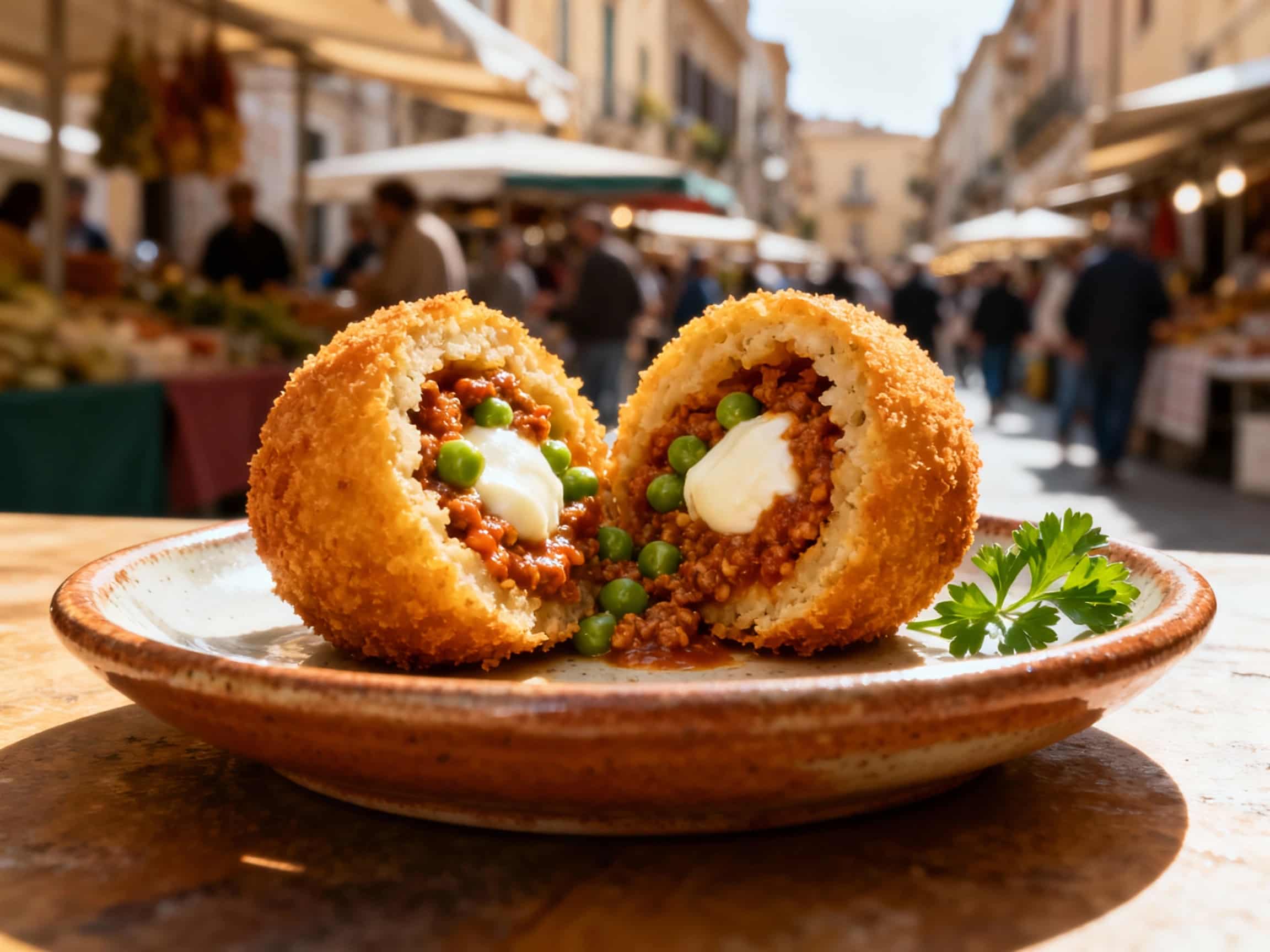
Arancini
Arancini
- Country
- Italy
- Region
- Sicily
- Recipes
- 3 Recipes
Dish information
Arancini, meaning 'little oranges' in Italian, are a quintessential Sicilian street food, renowned for their golden-fried exterior and rich, savory fillings. These spherical or conical rice balls are thought to have originated in Sicily during Arab rule in the 10th century, when rice was first introduced to the island. The tradition of breading and frying was developed later, possibly to preserve food or to make it more portable for hunters and workers. The classic filling, known as 'al ragù,' typically includes slow-cooked meat sauce, peas, and caciocavallo or mozzarella cheese, while 'al burro' features ham and mozzarella. Arancini gained widespread popularity across Sicily and beyond, becoming a symbol of its vibrant culinary culture. They are notably celebrated during the feast of Santa Lucia on December 13th, when bread and pasta are traditionally avoided, and arancini become a staple of the festive diet. Communities across Sicily often boast their own distinct variations, from shape to filling, reflecting the island's diverse regional influences. Notable culinary figures like Pino Cuttaia, a Michelin-starred chef, have reimagined arancini, elevating them from a simple street snack to a gourmet offering while retaining their deep cultural roots. Today, arancini are enjoyed globally, representing the ingenuity and flavorful heart of Sicilian cuisine.
Timeline
Rice cultivation introduced to Sicily by Arabs, laying groundwork for arancini.
Possible development of breading and frying techniques for food preservation.
Emergence of specific arancini fillings like ragù within Sicilian households.
Unification of Italy, contributing to wider recognition of regional dishes like arancini.
Post-war industrialization boosts availability of ingredients, making arancini more accessible.
Arancini begin appearing in Sicilian delis and street food stalls internationally.


